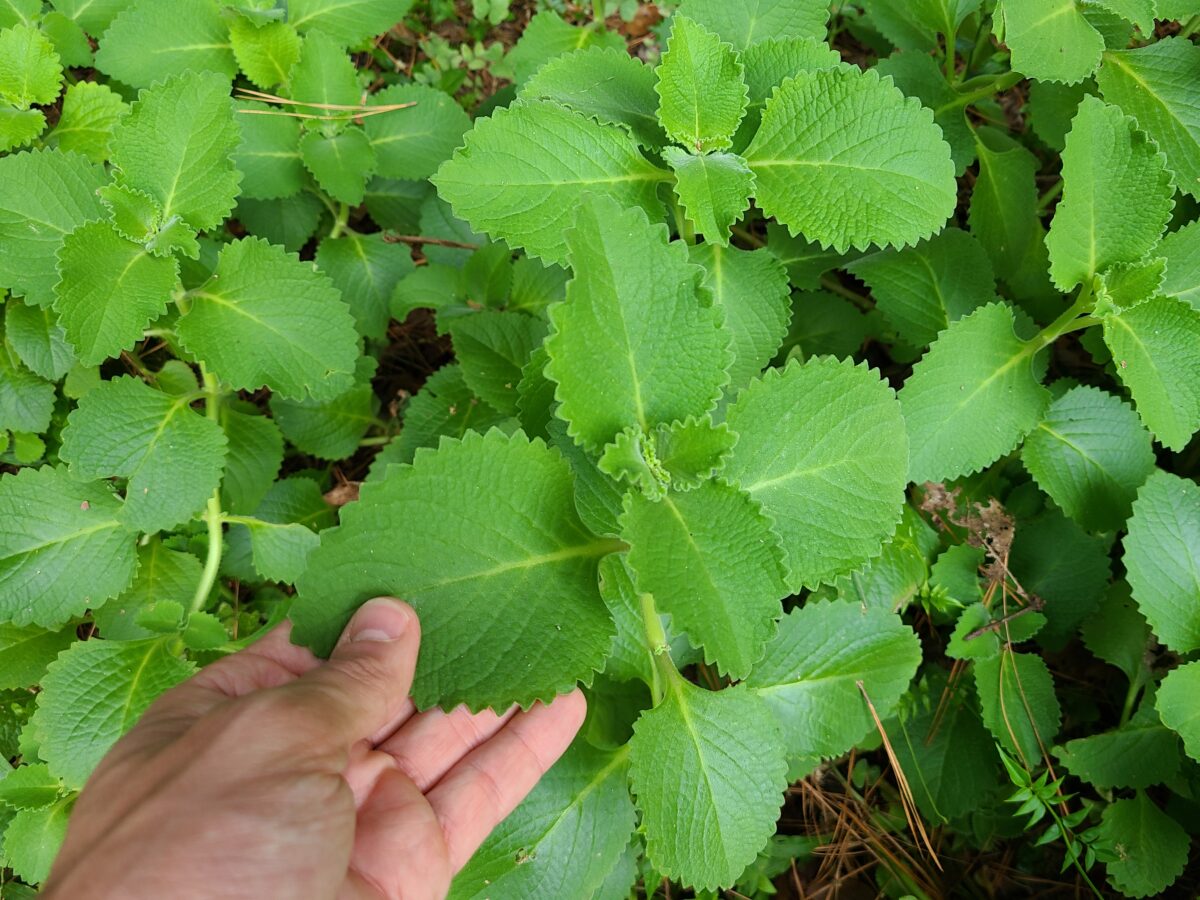Scientific name: Plectranthus amboinicus \ Coleus amboinicus
Other common names: Cuban oregano, Spanish/French thyme, Indian borage, Indian mint, country borage
It’s origin is unknown, but it is likely native to India or Africa. It is well documented for treating ailments by various indigenous peoples of southern Africa (about 12 different species of Plectranthus are used and noted).1 The Zulu people, in particular, are known to use this plant species. It is also widely grown in the tropics and warmer regions of Asia and Australia where it is used for many purposes including as an ornamental, medicinal, and culinary herb.2 It is additionally well-known in Indian Ayurvedic medicine.3 Species of Plectranthus have also been grown in hanging baskets in Europe for decades, including ‘Swedish Ivy’ (Plectranthus oertendahlii) which has been grown in Sweden for over 100 years.
Identification
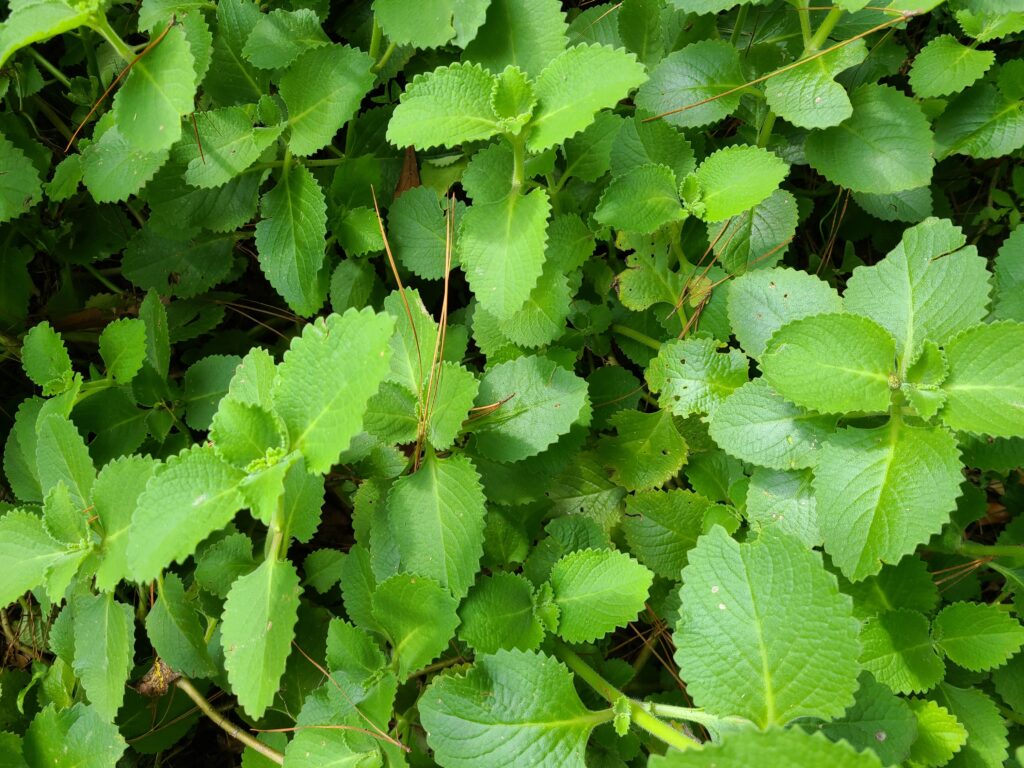
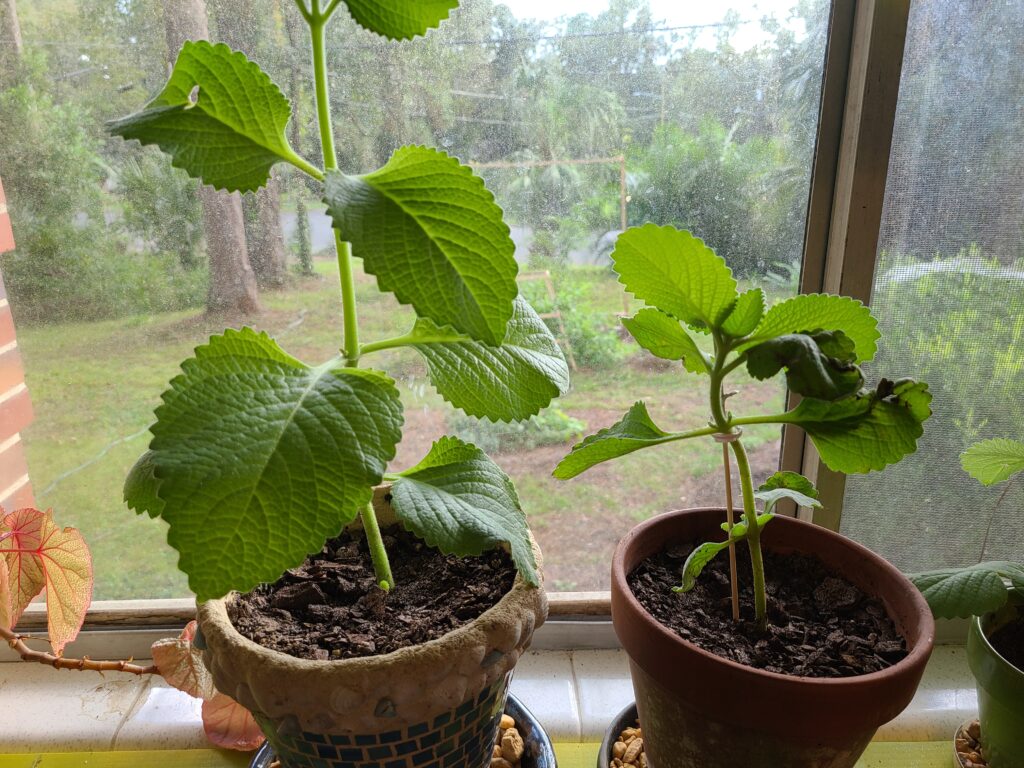
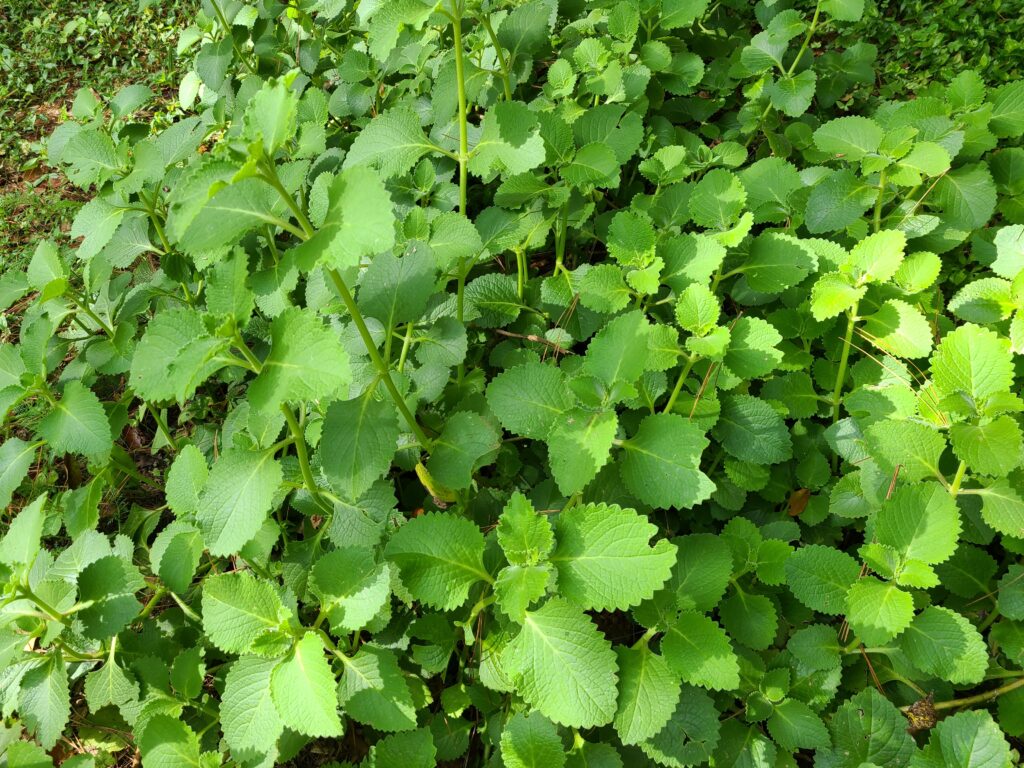
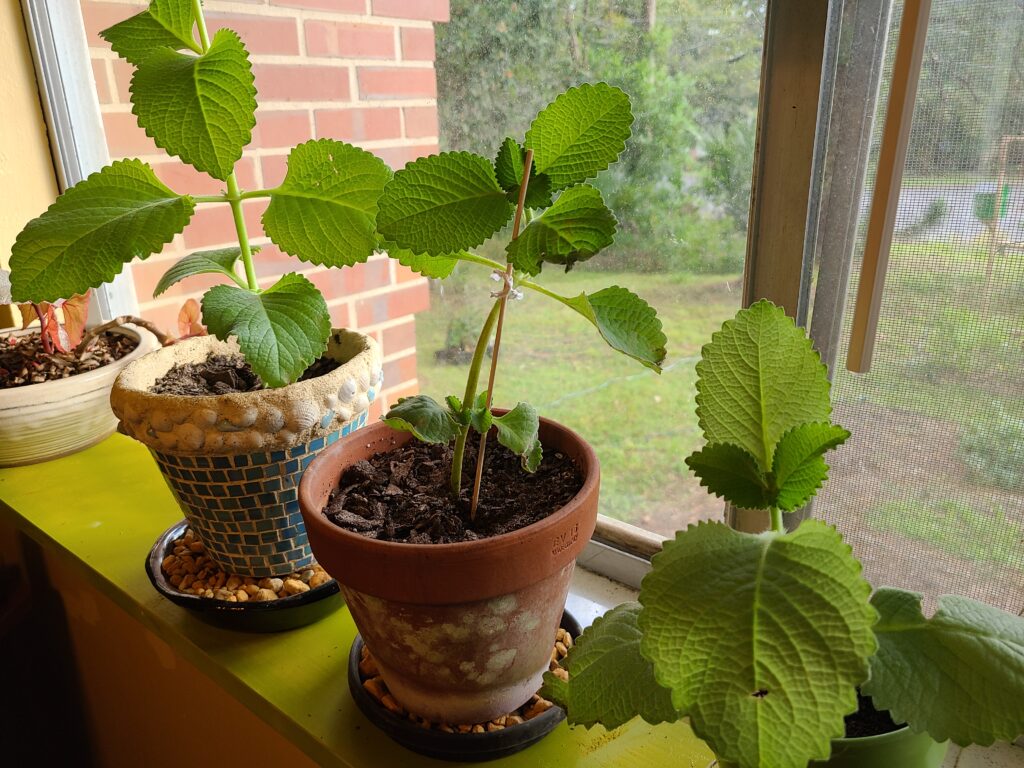
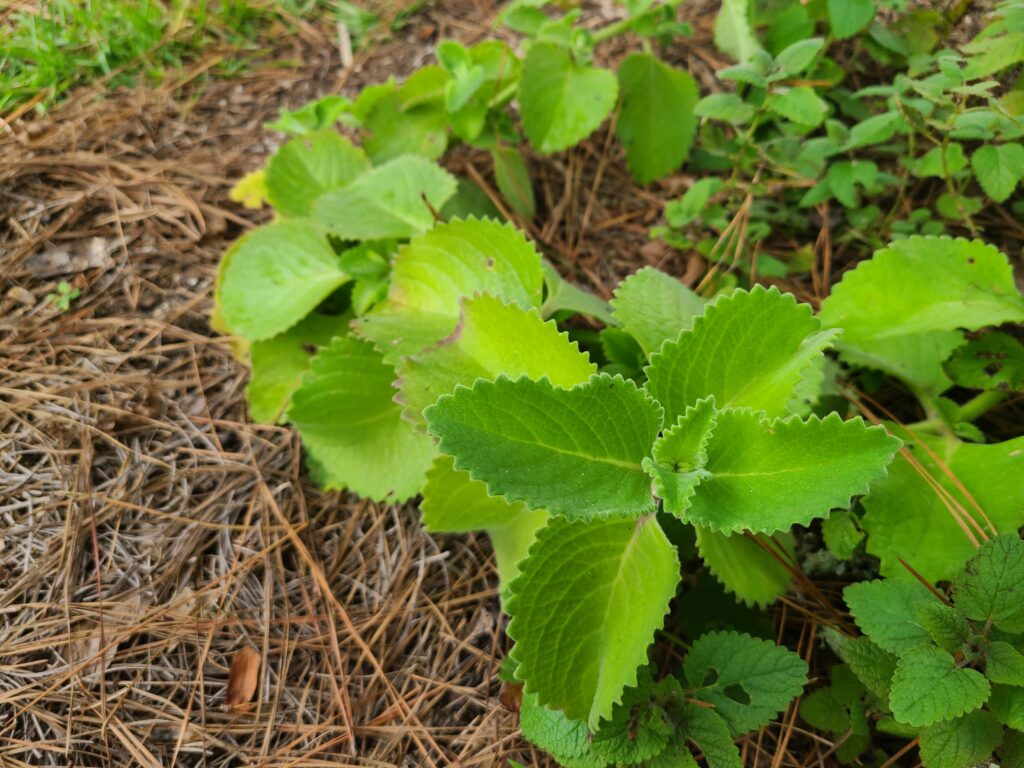
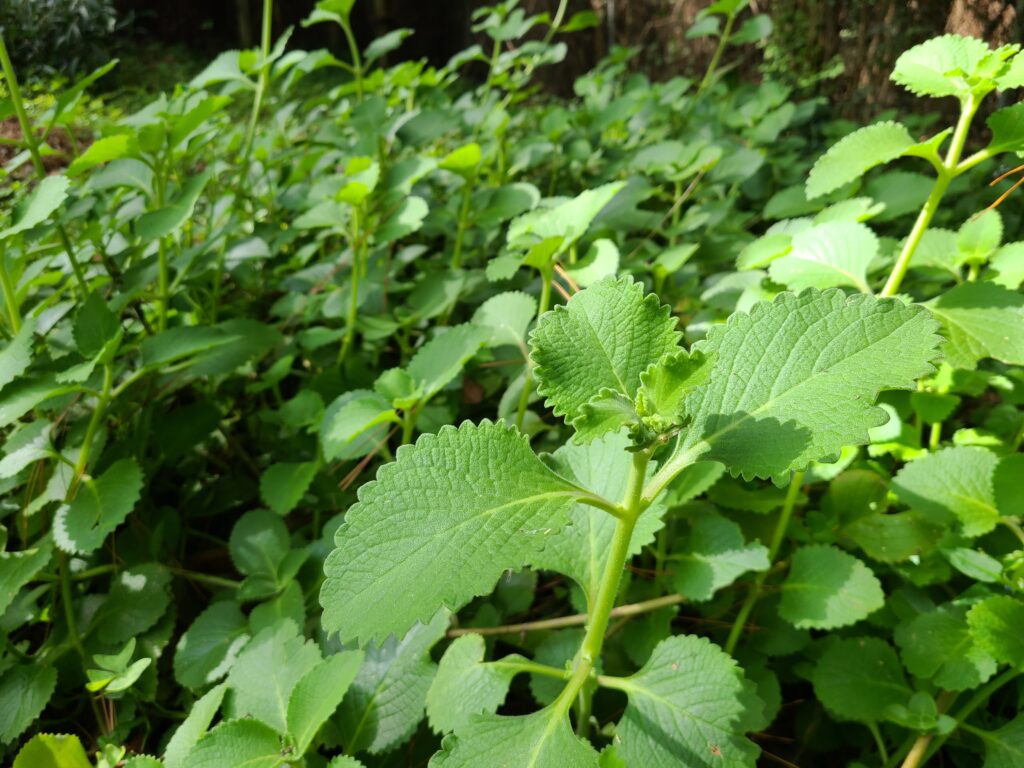
Mexican mint is a member of the mint family, and has similar leaf-shape. It is semi-succulent, and thus it’s leaves and stems are fleshy. The plant appears almost entirely green, though some varieties have leaves with white edges.4
In winter the plant will flower with small but vibrant pink to purple flowers.
Growing/Foraging
Plectranthus amboinicus is a plant that ranges from warm temperate areas with dry, mild winters to tropical areas with dry to wet climates. It is easily grown in many habitats including woodland or coastal bush, on rocky slopes and loamy or sandy flats at low elevations. The plant succeeds in full sun or shade, but prefers a well-drained and healthy soil in partial shade. It is a rampant and creeping grower if not controlled.
Growing in the garden is easy to start and maintain as the plant is low maintenance, hardy, and thrives in the ground or in a container. It grows rapidly and so can be used as a ground cover. New plants can be grown from seed or cutting. Propagation is easy: clip a new-growth stem and immediately plant in soil or root in water.
The leaves are picked for culinary purposes, but all parts of the plant can be used for medicinal intents.
Sustainability
While likely native to Africa, this plant has been naturalized in many areas around the world. However, because of its ease of care and rapid growth, it is considered invasive in some regions, especially tropical islands. Control is best maintained by keeping plant growth limited by container gardening. Regularly trim or harvest leaves for best look and plant health.
Medicinal and Food Properties
Mexican mint has a similar odor and flavor to oregano and mint, thus its common names. It is often used in savory dishes to flavor meats or stews, as well as adding flavor to hearty vegetables. The leaves can be included whole, shredded, chopped, fresh, or dried. Leaves are often cooked with meats and served on bread as a sandwich, included as a spice or flavoring to sauces, or even fried whole and eaten as a snack or appetizer.
Because of their fragrance and flavor, they can be used in most recipes where oregano or thyme are called for, though their profiles are not exactly the same. This plant has a thicker leaf and thus can add texture as well as flavor to dishes.
If you are suffering from a cold or other respiratory illness, Mexican mint treats many of the associated symptoms including sore throat, stuffy nose, congestion, or sinus inflammation. You can chew the leaves or use them to brew a flavorful tea. Consumed this way the plant’s compounds work to form a powerful expectorant. Its anti-inflammatory and cell regenerating properties mean that it can be used in oils or creams on the skin to treat bites, eczema, or psoriasis, while lessening itching and swelling.5 The same property gives creams or ointments made from Mexican mint efficacy in relieving back and neck pain or stiffness. The plant has Omega-6 fatty acids as well as vitamins A and C. The stems of the plant are rich in antioxidants. In addition, it can be used to calm upset stomachs and as a very effective diuretic. It has cytotoxic and anti-tumor promoting activity.6
There is some indication that the oils of this plant can serve as a natural mosquito repellent. It also has antimicrobial properties.
One scientific study, noted below, gives indication of the plant’s efficacy in the treatment of rheumatoid arthritis– similar to that of certain medications.7
Safety
There are no noted risks associated with consumption of this plant.
Recipes
Girija’s Indian Mint Cough Syrup 8
Ingredients
- 25 gm Mexican mint leaves
- 25 gm shallots (medium sized)
- 25 gm rock candy (rock sugar)
INSTRUCTIONS
- Skewer the leaves loosely and hold them over glowing coals or over a gas stove for a minute.
- Turn the leaves continuously to toast them without scorching. Pull them off the skewer and set aside.
- Now skewer the shallots and toast them likewise, but for 5 minutes, so that they too get roasted without being scorched. Now pull them off the skewer and peel them.
- Put the leaves, the shallots and the rock candy into a mortar, and crush to pulp using the pestle. If mortar and pestle are not readily available, just crush the rock candy to bits and transfer to your food processor. Add the leaves and the shallots and grind to a fine paste.
Cuban Oregano Marinade (Mojo)
Recipe adaptation by Paco Fiallos
Ingredients:
- 1/4 cup chopped garlic
- 1/2 cup chopped onion
- 1 cup fresh orange juice
- 1/2 cup fresh lime juice
- 1/2 cup olive oil
- 4 teaspoons Himalaya or sea salt
- 1 tablespoon black pepper
- 2 teaspoons ground cumin
- 1 cup Cuban oregano
- 1 tablespoon chopped fresh cilantro
Sources

